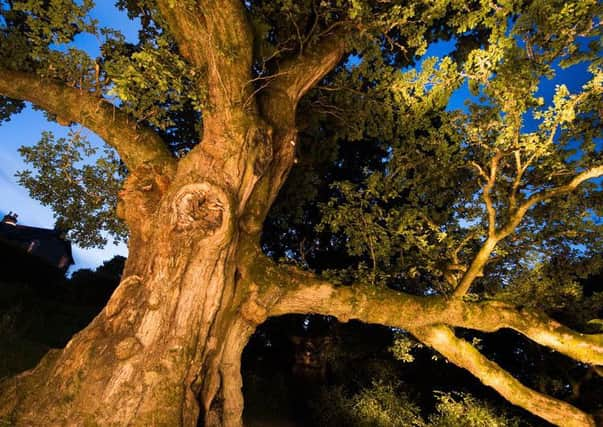Inside Environment: Don't just hug a tree - plant more and embrace whole forests


Once upon a time the majority of land in Scotland would have been wooded, with the only permanent open areas being high mountaintops, lochs and bogs. It may seem remarkable, but today we still have descendants of some of these ancient forests in the birch, oak and pine woods in the Highlands. We also have the UK’s oldest tree – the Fortingall yew, which experts believe could be 5,000 years old – and the Birnam oak, thought to be a survivor of the wood made famous in the Scottish play.
But actually the hills and glens are not quite as leafy as they could be. While Scotland is the most wooded area of Britain, we have much less tree cover than our European neighbours.
Advertisement
Hide AdAdvertisement
Hide AdCenturies of human activities, coupled with the more recent impacts of a changing climate bringing novel pests and diseases, have taken their toll on the landscape. People have been exploiting trees and felling forests to meet their needs since the beginning of time, resulting in our once great woodlands having virtually vanished by the 1500s.
Today just over a third of all of Scotland’s woods and forests – around 478,000 hectares – are publicly owned and cared for by the Forestry Commission, a cross-border public authority. Private landowners, communities, local councils and voluntary groups own the rest.
However, this is all about to change. Scottish ministers have just completed a consultation on proposals to change the way the woods and forests are run, with the key aim of completing devolution of the sector. Re-organisation will include setting up a new management agency, Forestry and Land Scotland, which will focus initially on managing the national forest estate to produce timber and deliver other economic, environmental and social benefits. It will also look at the best use of publicly owned land.
Since it happens to be National Tree Week, this is a good time to remind ourselves what trees do for us and for the planet. Firstly, they provide habitat for a host of other species, including many of our rarest and best loved native wildlife. Think red squirrels, pine martens and wildcats, not to mention the vast profusion of less headline-grabbing life such as insects, lichens, mosses and fungi.
Healthy forests also act as a natural defence against flooding and play a major role in helping combat climate change, absorbing and storing large quantities of climate-warming carbon dioxide emissions.
Then there is the wood, with Scottish timber in demand for everything from paper to flooring and biomass. The forestry sector makes a massive contribution to the Scottish rural economy, bringing in around £1 billion a year and providing 25,000 jobs.
And last but not least, trees are nice. The benefits of nature for health and well-being are finally being recognised, and woodlands present huge recreational opportunities for walkers, mountain bikers and nature tourists.
The good news is that forest cover has been increasing over the past century, with the latest figures showing 18 per cent of Scotland is now wooded – up from around five per cent in 1900. It’s true we’re way behind the rest of the world, but the Scottish Government has plans for this to reach 25 per cent, the current global coverage. This means planting more that 10,000 hectares of new woodland every year.
We can all do our bit too. Let’s get our spades out and grow more trees. It’s good for everyone.